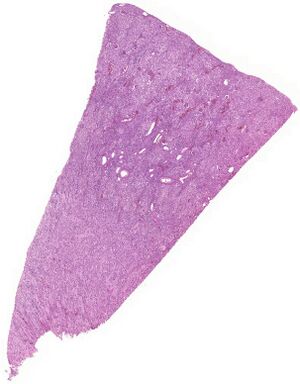7. Parenchymal degeneration in kidney
Staining: HE

Organ: Kidney
Description:
We can see “cloudy swelling”, the tubular cells are swelled and no longer has the normal morphology. This degeneration can be seen in the whole slide. The swelling comes from transparent vacuoles inside the cytoplasm.
Diagnosis: Parenchymal degeneration
Theory:
The morphological change called cloudy swelling is actually hydropic or vacuolar degeneration. Hydropic degeneration is the first manifestation of almost all forms of cellular injury. It is always reversible and is caused by how the injury disturbs the cells ability to maintain correct ion concentrations, causing them to take in water and swell.
A cause of hydropic degeneration in the kidney can be cardiac failure. When the heart fails to maintain the cardiac output, all organs will be hypoperfused, which initiates the usual cell injury changes (hypoxia, glycolysis, less ATP.) If the cell injury is maintained for a long time, or the lack of ATP becomes too severe, the cell will die by necrosis.
